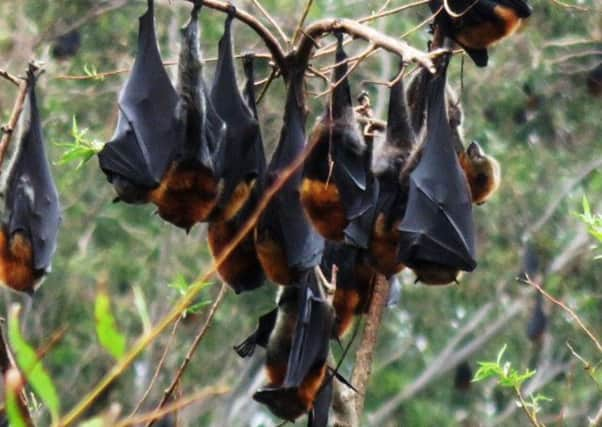Flying fox invasion causes a stink at Australian town


The grey-headed flying foxes, Australia’s largest bats, have been roosting in the middle of the east coast town of Batemans Bay for a few years, but their numbers soared to 140,000 this spring.
The mayor, Lindsay Brown, said the council would be considering a plan to use smoke, noise and lights to disperse the animals.
Advertisement
Hide AdAdvertisement
Hide AdSydney University bat researcher Kerryn Parry-Jones warned against trying to remove the colony. She said such efforts usually resulted in the bats splitting into two or more colonies, annoying even more people.
Residents say they feel trapped in their guano-coated houses, and those who venture outside soon feel a disgusting “sprinkle of something”. Then there’s the early-morning screeching, so excruciating that one, Danielle Smith, says she has had to go on anti-depressants.
Her two-year-old son can no longer play in the backyard, and “won’t even sleep in his own bed any more because he’s so frightened of the bats”.
“I can’t open my window at all because the smell is so bad,” Smith says.
The area’s population of the animals peaked at about 140,000 in April – nearly three times the number seen there last year. That is about 12 bats for each of the 11,000 human residents of the tourist town 95 miles from Canberra.
Civic leaders agree the stinking, noisy, messy and potentially diseased bats have got to go. But getting rid of the protected native species, which is listed as at risk of extinction due to habitat loss, is no simple task. Some experts warn against trying.
“We’re in uncharted territory with how to manage it,” the mayor said.
The Commonwealth Scientific and Industrial Research Organisation estimates there are 680,000 grey-headed flying foxes in Australia, meaning Batemans Bay is home to one in five of them. Each bat can weigh more than 2lbs and wing spans exceed three feet.
Advertisement
Hide AdAdvertisement
Hide AdThey fly out at dusk to feed on flowering trees in nearby forests, then wake townspeople with a cacophony of screeching on their return before dawn.
On nine consecutive nights in April, thousands of the bats flew into power lines, knocking out the whole town’s electricity supply.
The bats’ acidic droppings can burn through paintwork on cars if not washed off within hours. The pungent scent the males use to mark out their territory is sickening. A bite or scratch from a bat carries the risk of the rabies-like lyssa virus that has claimed three lives in Australia in the past 20 years.
The bats have been returning annually since 2012, making their home in an urban wetland known as Water Gardens and a golf course. But this year’s numbers are unprecedented; last year there were 50,000.